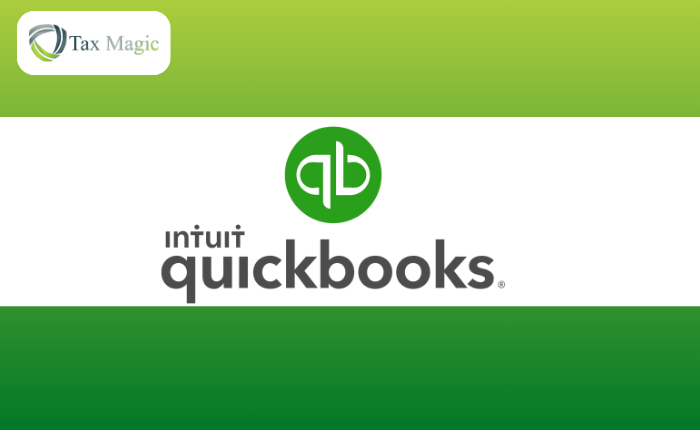1.3 FILING REQUIREMENTS
An individual must file a federal income tax return if gross income is above a threshold, net
earnings from self-employment is $400 or more, or (s)he is a dependent (i.e., listed on
another person’s tax return) with more gross income than the standard deduction or with
unearned income over $1,250.
The Standard Deduction
1. Taxable income (TI) is adjusted gross income (AGI) minus the greater of itemized
deductions or the standard deduction minus the qualified business income
deduction (QBID).
Adjusted
gross income
Taxable income = –
Greater of
allowable
itemized
deductions
on
Schedule A
or the
standard
deduction – QBID
a. The taxpayer itemizes deductions if the total allowable itemized deductions
is greater than the standard deduction. Otherwise, the taxpayer claims the
standard deduction. A person must elect to itemize, or no itemized
deductions will be allowed.
1. Election is made by filing Schedule A of Form 1040.
2. Election in any other taxable year is not relevant.
3. Election may be changed by filing an amended return (Form 1040-X).
Ineligible
b. The following persons are not allowed the standard deduction:
1. Persons who itemize deductions
2. Nonresident alien individuals
3. Individuals who file a “short period” return
4. A married individual who files a separate return and whose spouse
itemizes
5. Partnerships, estates, and trusts
6. Corporations
c. The standard deduction is the sum of the basic standard deduction and
additional standard deductions.
EXAMPLE 1-5
Ineligible Standard Deduction
Gary and Sara Beers are married but file separately. Gary has AGI of $40,000
and $8,200 of itemized deductions. Sara has $30,000 of AGI and $17,000 of
itemized deductions. Gary and Sara can elect to take the standard deduction
of $13,850 each. If they elect to itemize, Gary will have itemized deductions
of $8,200 and Sara will have itemized deductions of $17,000. If either Gary or
Sara choose to itemize, the other is required to itemize.
d. Basic Standard Deduction
e. The basic standard deduction amount depends on filing status and
dependency status on another’s return. The table below lists the amount per
f
iling status.
1. The basic standard deduction amount of a child under age 19 or a
student under age 24 who can be claimed as a dependent on another
individual’s income tax return is limited to the greater of either
a. $1,250 or
b. Earned income for the year plus $400 up to $13,850 (i.e., the
applicable single standard deduction).
2. Earned income does not include dividends or capital gains from the
sale of stock.
Additional Standard Deduction
f.
Additional standard deduction amounts, indexed for inflation, appear in the
table below.
1. An individual who has attained the age of 65 or is blind is entitled to
the amount.
a. “Blind” in this context means no better than 20/200 vision in
the better eye even with corrective lenses.
2. The individual is entitled to the amount if (s)he attains age 65 before
the end of the tax year
a. Even if (s)he dies before the end of the year
b. But not if (s)he dies before attaining age 65, even if (s)he would
have otherwise reached age 65 before year’s end.
3. A person who becomes blind on or before the last day of the taxable
year is entitled to the amount.
4. Once qualified, the standard deduction is allowed in full.
a. It is not prorated if a person dies during a tax year.
5. An individual who has both reached age 65 and is blind is entitled to
twice the amount.
2023 Standard Deduction Amounts
Filing Status
Basic
Married Filing Jointly
Additional
$27,700 $1,500
Qualifying Surviving Spouse 27,700 1,500
Head of Household
20,800 1,850
Single (other than above) 13,850 1,850
Married Filing Separately
13,850 1,500
EXAMPLE 1-6
Standard Deduction — Head of Household
Toni Mills, 52, qualifies as head of household. Her basic standard deduction
is $20,800. She does not qualify for an additional standard deduction.
EXAMPLE 1-7
Additional Standard Deduction — Head of Household
Mike Forth is 68, legally blind, and qualifies as head of household. His basic
standard deduction is $20,800. He also qualifies for two additional standard
deductions of $3,700 ($1,850 for being 65 or older + $1,850 for being blind). His total
standard deduction is $24,500.
EXAMPLE 1-8
Additional Standard Deduction — Married Filing Jointly
Adam and Betty Washington are both over 65 and legally blind. They are married and
f
ile a joint return. They qualify for four additional standard deductions (one each for
being over 65 and one each for being blind). Their total standard deduction for the
year is $33,700 [$27,700 basic standard deduction + ($1,500 × 4 additional standard
deductions)].
EXAMPLE 1-9
Standard Deduction — Head of Household
Joni Woodson is unmarried and fully supports her 72-year-old mother. Joni qualifies
as head of household. Joni’s basic standard deduction is $20,800. Joni may not
claim the additional standard deduction for her dependent mother.
6. Gross Income Filing Threshold
7. Until 2026, the gross income filing threshold amount generally is the standard
deduction (excluding any amount for being blind).
a. The first exception to the general rule is the $5 filing threshold for married
f
iling separately taxpayers.
b. The second exception is that, except for married filing separately, the filing
requirement limitations are increased for taxpayers by the additional
standard deductions for being over 65, but not for being blind.
NOTE: Gross income does not include any Social Security benefits unless (1) the
taxpayer(s) is (are) married filing a separate return and lived with the spouse at any time
during the year or (2) one-half of the Social Security benefits plus other gross income and
any tax-exempt interest is more than $25,000 ($32,000 if married filing jointly).
c. Married individuals filing separately are not allowed to include the standard
deduction in the threshold computation because if one taxpayer itemizes his
or her deductions, the other is required to itemize.
d. Each individual who is over age 65 is entitled to an additional standard
deduction when calculating the gross income threshold.
Additional Standard Deduction
Married Filing Jointly
Qualifying Surviving Spouse
$1,500
Married Filing Separately
Head of Household
Single
$1,850
e. Any personal residence disposition gain that was excluded and any foreign
earned income that was excluded must be added back to gross income for
purposes of this filing requirement.
EXAMPLE 1-10
Gross Income Filing Requirements
Josie is retired and receives only $2,500 in interest income for the year. She
sold her residence, which she has lived in for over 10 years, for $180,000 with
a gain of $40,000. Even though any gain on the sale of the residence is
excluded from income, Josie is required to file an income tax return because
the gain is added to gross income for filing purposes.
f.
Special conditions may also require filing, e.g., liability for a special tax, such
as AMT or receipt of wages from a church.
g. Even if not required, an individual should file to obtain a refund and possibly
to establish a record and trigger running of statutes of limitation.
Signature Requirement
8. The taxpayer, the taxpayer’s spouse, and the paid return preparer all must sign the
completed return, declaring under penalty of perjury that they have examined the
return and the accompanying schedules and statements and, to the best of their
knowledge and belief, the return and schedules are true, correct, and complete.
a. The penalty of perjury means if the taxpayer willfully makes and subscribes
any return, statement, or other document that the taxpayer does not believe
to be true and correct as to every material matter, the taxpayer has
committed a felony and could be penalized up to $250,000 (for an
individual).
Due Date
9. Generally, the income tax return must be filed (postmarked) not later than the 15th
day of the 4th month following the close of the tax year. This is April 15 for calendar
year taxpayers. If the 15th day is a Saturday, a Sunday, or a legal holiday, the due
date is the next day that is not a Saturday, a Sunday, or a legal holiday.
a. An automatic extension of 6 months is provided for an individual who files
Form 4868 or makes the required tax payment on or before the initial due
date.
b. A U.S. citizen or resident who is on military or naval duty outside the
U.S. (or Puerto Rico) on April 15 is given an automatic 2-month extension
without the necessity of filing Form 4868.
1. Filing of Form 4868 during the 2 months will allow another 4-month
extension.
c. The due date for a decedent’s final return is the date on which the return
would have been due if death had not occurred.
d. A Form 1040-NR nonresident alien’s tax return (when not subject to wage
withholding) must be filed by the 15th day of the 6th month after the close of
the tax year (unless extended).
1. A nonresident alien must file his or her tax return on the 15th day of
the 4th month after the close of the tax year (unless extended) if his or
her wages are subject to withholding.
Liability Payment
10. Tax liability must be paid when the return must be filed. Automatic extension for
f
iling the return does not extend time for payment.
a. Interest will be charged from the original due date.
b. A penalty of 5% per month up to 25% of unpaid liability is assessed for failure
to file a return.
c. In general, a failure to pay penalty is imposed from the due date for taxes
(other than the estimated taxes) shown on the return.
1. The penalty is 0.5% per month of the tax not paid, up to 25%.
2. A failure to pay penalty may offset a failure to file penalty.
3. When an extension to file is timely requested, a failure to pay penalty
may be avoided by paying an estimate of unpaid tax in conjunction
with the extension request.
a. The payment may not be less than 90% of the actual tax
liability due, and the balance must be paid when the return is
f
iled.
b. Exceptions and adjustments to these rules do apply in unique
situations.
Recordkeeping
11. Books of account or records sufficient to establish the amount of gross income,
deductions, credit, or other matters required to be shown in any tax or information
return must be kept.
a. Records must be maintained as long as the contents may be material in
administration of any internal revenue law.
b. Employers are required to keep records on employment taxes until at least 4
years after the due date of the return or payment of the tax.
12. If an individual is required to report employment taxes or give tax statements to
employees, (s)he must have an employer identification number (EIN).
a. The EIN is a 9-digit number the IRS issues to identify the tax accounts of
employers.
13. Penalties are applied when an employer fails to make a required deposit of taxes on
time.
a. The penalties do not apply if any failure to make a proper and timely deposit
was due to reasonable cause and not to willful neglect.
b. For amounts not properly or timely deposited, the penalty rates are
1. 2% for deposits made 1 to 5 days late
2. 5% for deposits made 6 to 15 days late
3. 10% for deposits made 16 or more days late
The exception for a 15% rate is beyond the scope of the exam and therefore not
covered in detail.
14. Identity Protection Personal Identification Number (IP PIN)
15. The IRS IP PIN is a 6-digit number assigned to eligible taxpayers to help prevent the
misuse of their Social Security numbers on fraudulent federal income tax returns.
The IP PIN helps the IRS verify a taxpayer’s identity and accept their electronic or
paper tax return.
a. If a return is e-filed with the taxpayer’s SSN and an incorrect or missing IP
PIN, the IRS system will reject it until the return is submitted with the correct
IP PIN or filed on paper. If the same conditions occur on a paper-filed return,
the IRS will delay its processing and any refund that may be due for taxpayer
protection while the IRS determines if the return is the taxpayer’s.
About Lesson
Exercise Files



